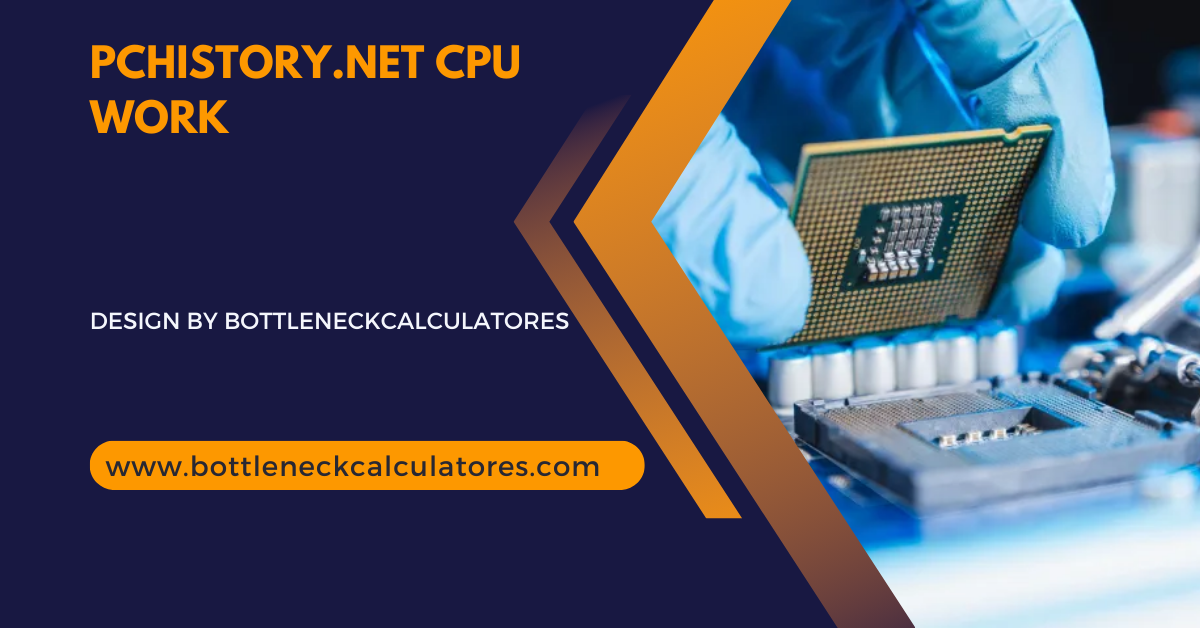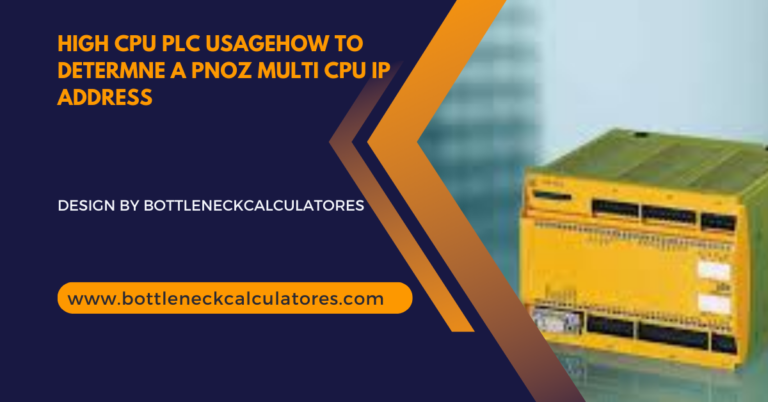Pchistory.Net Cpu Work – Understanding How CPUs Work!
CPUs, the brain of computers, execute tasks through fetch-decode-execute cycles, multitasking with advanced cores.
In this article, we’ll take an in-depth look at how CPUs work, the components that make them tick, and their role in computing.
Table of Contents
What is a CPU?
The CPU is a small but powerful chip located on your computer’s motherboard. It processes instructions from programs and performs calculations required for tasks like browsing the web, running applications, or gaming.
Modern CPUs are incredibly sophisticated, capable of handling billions of operations per second, ensuring high performance and responsiveness.
Key Components of a CPU:
Let’s dive into the core components that make up a CPU:
Control Unit (CU):
- The CU manages and coordinates the activities of the CPU.
- It interprets instructions from software and directs the flow of data between the CPU, memory, and other hardware components.
Arithmetic Logic Unit (ALU):
- The ALU performs mathematical calculations and logical operations, such as addition, subtraction, and comparisons.
- This is where most of the “thinking” happens in the CPU.
Registers:
- Registers are small, fast storage locations inside the CPU.
- They temporarily hold data and instructions that the CPU is actively working on.
Cache Memory:
- Cache is a high-speed memory located within the CPU, storing frequently accessed data.
- It significantly reduces the time needed to retrieve data from slower main memory (RAM).
Clock:
- The CPU clock regulates the speed at which the CPU executes instructions, measured in GHz (gigahertz).
- A higher clock speed often results in faster processing, though efficiency depends on other factors as well.
How Does a CPU Work?
The CPU operates in a cycle known as the fetch-decode-execute process:
Fetch:
- The CPU retrieves an instruction from the computer’s memory (RAM).
- The address of the next instruction is determined by the program counter.
Decode:
- The fetched instruction is decoded by the Control Unit into a format the CPU can understand.
- It breaks the instruction into steps that can be executed.
Execute:
- The decoded instruction is carried out by the ALU.
- The result is stored in the registers or sent back to memory if needed.
Store:
- The result of the executed instruction is stored for future use.
- This step often involves writing data back to memory or another storage device.
This cycle repeats billions of times per second, allowing the CPU to handle multiple tasks rapidly.
Multi-Core Processors:
Modern CPUs often come with multiple cores, enabling them to perform more tasks simultaneously.
- Single-Core CPUs: Process one instruction at a time, which limits multitasking.
- Dual-Core, Quad-Core, and Beyond: These CPUs can handle several instructions at once, improving multitasking and performance.
Each core operates independently, allowing the CPU to run complex applications and handle intensive tasks like video editing or gaming more efficiently.
Hyper-Threading and Simultaneous Multithreading (SMT):
Some CPUs use technologies like Hyper-Threading (Intel) or SMT (AMD) to improve multitasking:
- These technologies allow each core to handle two threads of instructions simultaneously.
- This effectively doubles the number of tasks the CPU can manage, enhancing performance in multi-threaded applications.
Types of CPUs:
- Desktop CPUs: Found in personal computers. Designed for general-purpose use, including gaming, browsing, and productivity tasks.
- Mobile CPUs: Optimized for energy efficiency and compact size in laptops and tablets.
- Server CPUs: Built for high workloads and reliability in data centers.
- Embedded CPUs: Used in specialized devices like IoT gadgets, industrial machines, and medical equipment.
CPU Performance Factors:
Several factors influence a CPU’s performance:
- Clock Speed: Determines how quickly the CPU can process instructions.
- Number of Cores: More cores generally mean better multitasking capabilities.
- Cache Size: A larger cache allows for faster data retrieval.
- Thermal Design Power (TDP): Indicates how much heat the CPU generates and affects cooling requirements.
- Architecture: Advanced architectures improve efficiency and performance.
The Role of the CPU in Gaming:
In gaming, the CPU plays a critical role in:
- Processing game logic, physics, and AI.
- Supporting the GPU (Graphics Processing Unit) in rendering graphics.
A powerful CPU ensures smooth gameplay and faster response times, especially in CPU-intensive games like strategy or simulation titles.
Future Trends in CPUs:
As technology advances, CPUs continue to evolve:
- Smaller Transistors: Chip manufacturers are shrinking transistor sizes, increasing efficiency and performance.
- AI Integration: Future CPUs may feature built-in AI capabilities for enhanced performance in machine learning tasks.
- Quantum Computing: Though still experimental, quantum processors could revolutionize computing with unparalleled processing power.
How to Choose the Right CPU:
When buying a CPU, consider:
- Purpose: For gaming, focus on clock speed and core count. For productivity tasks, look for multi-core processors with hyper-threading.
- Compatibility: Ensure the CPU is compatible with your motherboard and RAM.
- Budget: Strike a balance between performance and cost.
FAQ’s
1. What is a CPU?
The CPU (Central Processing Unit) is the “brain” of a computer, responsible for executing instructions and performing calculations.
2. What are the main components of a CPU?
Key components include the Control Unit (CU), Arithmetic Logic Unit (ALU), registers, cache memory, and clock.
3. How does the CPU process data?
It uses the fetch-decode-execute cycle to retrieve, interpret, and execute instructions rapidly.
4. What is a multi-core processor?
A multi-core processor has multiple cores that can handle tasks independently, improving multitasking and performance.
5. How does hyper-threading improve CPU performance?
Hyper-threading allows each core to handle two threads simultaneously, doubling the CPU’s task management capacity.
6. What factors affect CPU performance?
Performance depends on clock speed, core count, cache size, thermal design power (TDP), and architecture.
7. Why is the CPU important in gaming?
The CPU processes game logic, physics, and AI while supporting the GPU for smooth gameplay and fast response times.
8. What are the types of CPUs?
Types include desktop CPUs for general use, mobile CPUs for energy efficiency, server CPUs for heavy workloads, and embedded CPUs for specialized devices.
Conclusion
The CPU is a marvel of modern engineering, driving the performance of computers across various industries. Understanding how CPUs work can help you appreciate their importance and make informed decisions when upgrading or building a system. At PCHistory.net, we aim to demystify technology and help users navigate the ever-changing world of computing. Whether you’re a tech enthusiast or a casual user, knowing the basics of CPU operation is key to understanding your computer’s capabilities and potential.







